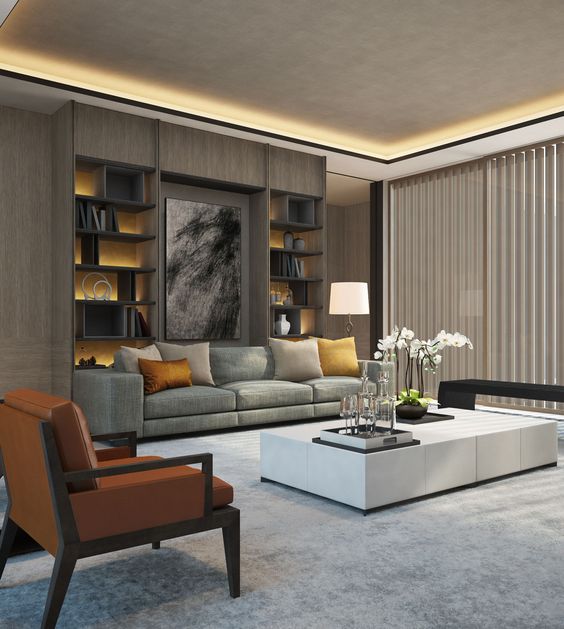Ceiling and Lighting Design
More important than you might think : Recessed lighting
Even though you might not notice it, ceiling design is more important than you might think‒ its geometry, limits, structures and elements guide your view through the room, and lots of things happen up there: roof-lights, lighting, smoke detectors, ventilation grills, speakers, etc.
As architects and designers, we aim to install these in such a way that not only do you not notice their presence, but you also find the result harmonious, balanced and beautiful.
Recessed lighting, Types:
1-Ceiling-to-wall void and middle void:
These are the two most commonly used forms of LED strip recessed lighting, the second being more suitable for classical styles than for modern ones.
Both create the impression of the ceiling being higher,and give an indirect, ambient type of lighting which is good for hallways, corridors and transitional spaces, or where ambient lighting is required but is complemented with direct lighting, as in bathrooms.
SDCA Interiors - Led Middle void Indirect LED light
JM Architects - Ceiling to wall void LED Lighting
2-Trimless spots: round or square, double or single
Here, we have not considered including spotlights with trims, and have applied the same criteria as for trimless spots.We believe that they are worth their additional cost because the finished result is much crisper and cleaner.
These can be round or square-shaped, “orientable” or fixed, and in different sizes as well. One notable difference from the regular spotlights is that there will be a first fixing before the ceiling is painted, and then the installer will have to skim the ceiling round each spotlight.
We recommend that these should be directed towards specific areas where specific activities are going to take place. They can also point at specific objects, thus making this type of illumination more practical than the LED strips.
We also recommend the use of square-shaped spotlights when there is a need to highlight a certain geometry or direction, and rounded spotlights when we want to create the opposite effect .
Square Trimless spot with rounded orientable luminaire
Rounded trimless spot, orientable
Rounded trimless spots not orientable
3-Linear lighting
This type of lighting is excellent for corridors, hallways and transitional circulation spaces, and also whenever we want to create bold geometry or a pronounced depth of space .
Brilliant Linear LED lighting example by Fran Silvestre Architects
Thank you for taking the time to read this article, we look forward to hearing from you so please do not hesitate to get in touch.
Recommended Reading:








